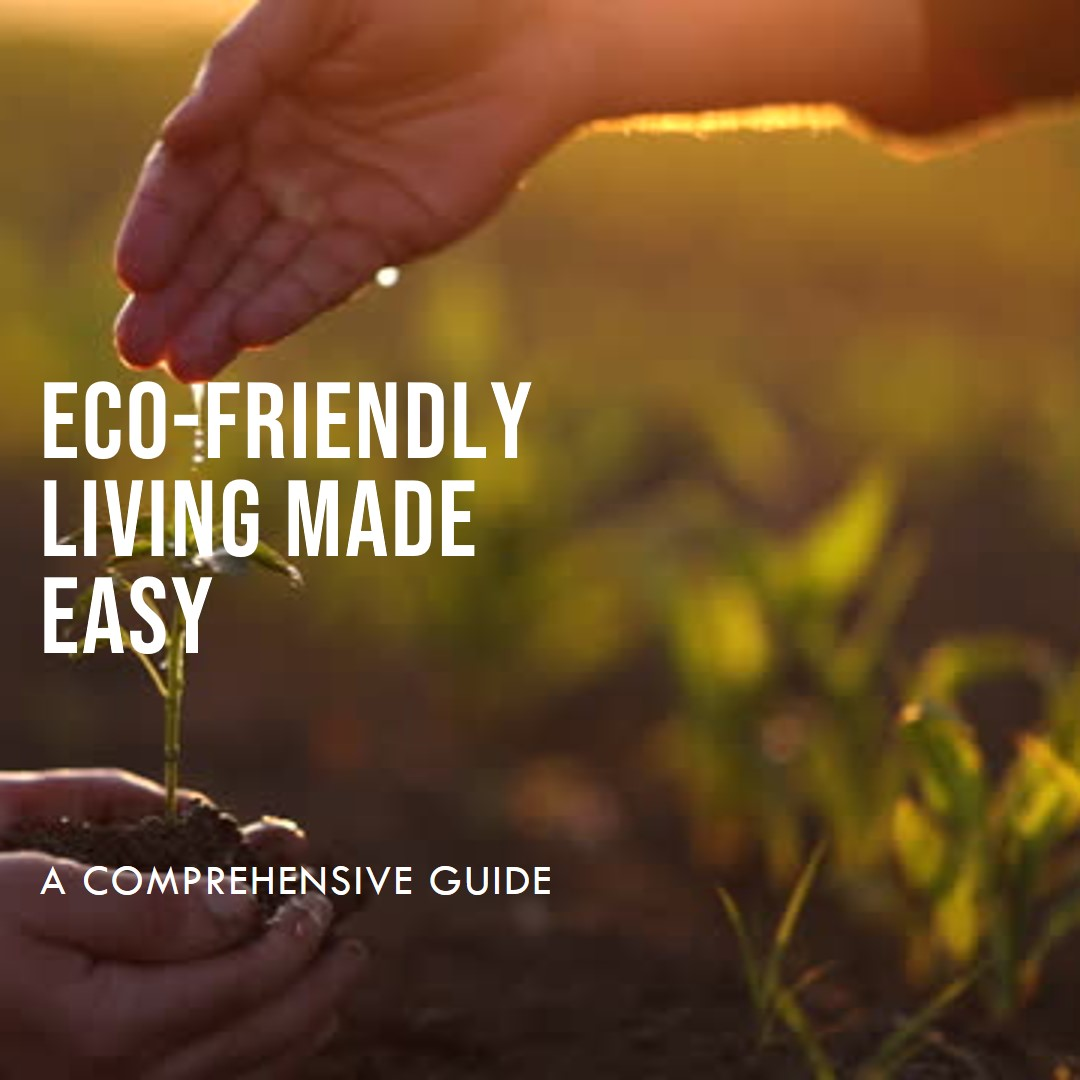In an age where environmental concerns are at the forefront of global discourse, adopting an eco-friendly lifestyle is more important than ever. This guide aims to provide you with detailed strategies and actionable steps to make your daily life more sustainable, reducing your ecological footprint while promoting a healthier planet.
Understanding Eco-Friendly Living
Eco-friendly living involves making choices that contribute to the conservation of natural resources, reduce pollution, and support biodiversity. It’s about making small, everyday changes that collectively have a significant impact on the environment.
Why Eco-Friendly Living Matters
Adopting an eco-friendly lifestyle helps to combat climate change, reduce waste, and protect our natural habitats. By making sustainable choices, we ensure that future generations can enjoy a healthy and thriving planet.
Energy Conservation at Home
Reduce Energy Consumption:
- Switch to LED Bulbs: LED bulbs use up to 85% less energy than traditional incandescent bulbs and last significantly longer.
- Unplug Devices: Many electronics draw power even when turned off. Unplugging devices when not in use can save a considerable amount of energy.
- Smart Thermostats: Installing a smart thermostat helps optimize heating and cooling, reducing energy consumption and lowering utility bills.
Sustainable Transportation
Opt for Public Transit or Carpooling:
- Use Public Transportation: Reducing the number of cars on the road lowers greenhouse gas emissions.
- Carpooling: Sharing rides with others decreases the total number of vehicles needed, cutting down on emissions and fuel consumption.
Invest in Electric Vehicles (EVs):
- Electric Cars: EVs produce zero tailpipe emissions and can be powered by renewable energy sources.
- Bicycles and E-Scooters: For short distances, consider biking or using an electric scooter. Both are eco-friendly alternatives to driving.

Waste Reduction
Practice the 3 Rs: Reduce, Reuse, Recycle:
- Reduce: Minimize the amount of waste you produce by opting for products with less packaging.
- Reuse: Repurpose items instead of discarding them. For example, glass jars can be used for storage.
- Recycle: Properly recycle paper, plastic, glass, and metal products to prevent them from ending up in landfills.
Composting:
- Kitchen Scraps: Composting organic waste like fruit peels, coffee grounds, and vegetable scraps reduces landfill waste and produces nutrient-rich soil for gardening.
- Yard Waste: Leaves, grass clippings, and branches can also be composted to enhance soil health.
Sustainable Shopping
Eco-Friendly Products:
- Buy Local: Purchasing locally produced goods reduces transportation emissions and supports local economies.
- Eco-Labels: Look for certifications like USDA Organic, Fair Trade, and Energy Star to ensure products meet environmental standards.
Reduce Plastic Use:
- Reusable Bags: Use cloth bags instead of plastic ones when shopping.
- Avoid Single-Use Plastics: Opt for reusable containers, water bottles, and straws to reduce plastic waste.
Water Conservation
Efficient Water Use:
- Fix Leaks: Repairing leaks promptly can save thousands of gallons of water annually.
- Low-Flow Fixtures: Installing low-flow showerheads and faucets reduces water usage without sacrificing performance.
- Water-Smart Landscaping: Use native plants that require less water and practice xeriscaping to conserve water in your garden.
Green Building and Renovations
Sustainable Materials:
- Bamboo and Recycled Materials: Choose building materials like bamboo, recycled metal, and reclaimed wood for their durability and lower environmental impact.
- Energy-Efficient Windows: Double-glazed windows provide better insulation, reducing the need for heating and cooling.
Renewable Energy:
- Solar Panels: Installing solar panels can significantly reduce your reliance on fossil fuels and lower your electricity bills.
- Wind Turbines: For those in suitable areas, small wind turbines can provide a substantial amount of renewable energy.
Eco-Friendly Habits
Mindful Eating:
- Plant-Based Diet: Reducing meat consumption lowers greenhouse gas emissions and conserves water and land resources.
- Organic Foods: Choosing organic products supports sustainable farming practices that are better for the environment.
Conscious Consumption:
- Minimalism: Embrace a minimalist lifestyle by buying only what you need, which reduces waste and promotes sustainability.
- Second-Hand Shopping: Purchasing second-hand clothes and furniture reduces the demand for new products, thereby conserving resources.
Community Involvement
Support Environmental Initiatives:
- Local Clean-Ups: Participate in or organize local clean-up events to help keep your community free of litter.
- Environmental Advocacy: Support policies and initiatives that aim to protect the environment and promote sustainability.
Education and Awareness:
- Share Knowledge: Educate others about the importance of eco-friendly living and the steps they can take to contribute.
- Stay Informed: Keep up with the latest environmental news and advancements to continually improve your sustainable practices.
Conclusion
Adopting an eco-friendly lifestyle is a journey that involves continuous learning and adaptation. By implementing these strategies, you can significantly reduce your environmental impact and contribute to a more sustainable future. Remember, every small change counts, and together, we can make a substantial difference.
